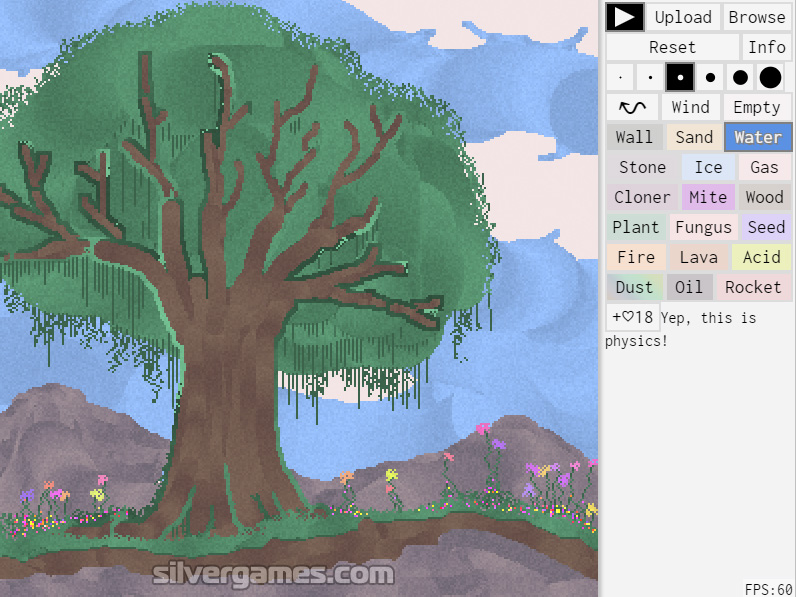
I think my favorite things about this game was making pixel art with the rainbow “Dust” element, and the way that “Dirt” absorbs and diffuses water to become mud. It’s… a falling sand game! You can set things on fire, draw fountains, and there’s even a fluid simulation that allows particles to float around in the wind.

The first proper attempt was pure javascript in 2015. The first thing you should know is that Sandspiel is actually my third or fourth attempt at building an interactive falling sand simulation. I wanted to facilitate this in sandspiel with the upload system. The added dimension of an audience brings so much depth to playing around with sand. programs at school)īeautiful pixel-art architecture to destroy. (I think these were directly fueled by children coming home after D.A.R.E. Grotesque “Don’t Smoke” educational demonstrations. Games for the player, often with empty promises of some reward for voting. Three archetypes of upload I remember fondly: There was a wide variety in complexity and motivations among posters. It’s also important that this system was built right into the game - every player had a immediate audience for their creation, in contrast to a culture built around a few famous youtubers or streamers, or even that peculiar sort of self-selecting community you find on enthusiast forums.
FALLING SAND GAME FREE FREE
Powder Game’s upload galleries were a special place - the accessible venue to build something and share it led to people inspiring each other, riffing, and pushing the game in incredible directions! Sand games captured my free time and imagination throughout my childhood in large part because of this weird community. There was a beautiful micro-culture of people making games, toys, demos, propaganda, and art. If a character is only eight pixels tall, a large part of what we see is within our own imagination.” - Loren Schmidt flotsam by mark wonnacott MicrocommunityĮveryone loves to opine on their forgotten, weird corners of the internet, and mine is the upload gallery of dan-ball.jp’s Powder Game around 2007-2013. “Low-fidelity art is also appealingly open to interpretation. Much like playing with dolls or other simplistic model, the pixels flowing around on the screen are stand ins for the story you tell yourself about them. Predicting how a scenario will play out based on your physical intuition is a form of play, as is projecting your imagination over what you see represented on screen. It’s also important that this system is engaging not just for its actual depth, but also because of the ways your imagination sees reality reflected in it. The result is a system with surprising depth and variety to explore. The interactions between the elements and across the space is where the interesting complexity of the simulation unfolds. In sand games, just like in other cellular automata (such as the Game of Life), the behavior of any single element is very simple. Playing with the elements means asking questions, building experiments, and inventing stories and games of your own. I think that I love these games so much because their mode of play is creative in a way that activates many parts of your imagination. In each game, you’re given a pallette of virtual solids, liquids, and gasses, and it’s up to you to paint them onto the screen to discover how they interact. If Sandspiel is the first “falling sand game” you’ve played, it’s important to understand that it fits into a genre of games, which are developed independently and usually distributed as free webgames in the form of flash or java applets. If you’re reading this but haven’t played sandspiel, you should probably go try it! I really enjoyed writing this game, and wanted to put into writing some of my goals, design decisions, and learnings from that process. Sandspiel is a falling sand game I built in late 2018.


 0 kommentar(er)
0 kommentar(er)
